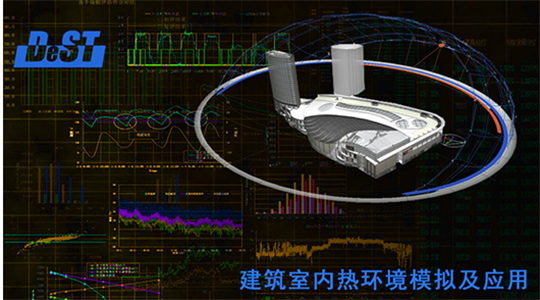
当前课程知识点:建筑室内热环境模拟及应用 > 第八章 人行为模拟分析方法与DeST应用案例介绍 > 08-07 访谈:IEA能源分析师Brian Dean谈建筑人行为 > 08-07 访谈:IEA能源分析师Brian Dean谈建筑人行为
Hello I’m Brian Dean
大家好 我是Brian Dean
I work in Energy Efficiency Division and the international energy agency
我在国际能源署的能源效率决策部门工作
And I’ve been asked to talk to you today about occupant behavior.
今天我和大家分享我对于建筑人行为的看法。
And in my research on occupant behavior
在我的研究中
what I’ve always started with, in terms of a basic principle
我总是从一个基本原则开始
is that occupant behavior is one of the components in energy simulation of buildings
我认为人行为是建筑能耗模拟中基础组成部分
And when we think about how energy use happens in buildings
当我们考虑建筑如何消耗能源的时候
we first look at the physical building
我们首先看建筑的物理性质
so we know what the shape of the building is
我们会考虑建筑的形状
we know the energy efficiency level of windows and the walls are, what the equipment is
考虑不同节能标准的外窗、外墙、使用的设备
That’s a physical building
这就是建筑的物理性质
And then we talk about weather
然后我们考虑室外气象
Weather is obviously a huge impact on the energy use of buildings
室外气象对于建筑能耗使用影响巨大
So we got the physical buildings the weather
当我们考虑完了建筑的物理性质和室外气象
and then the last one is occupant behavior
之后我们需要考虑的就是建筑人行为
So when we put those three together physical building
所以当我们将建筑的物理性质
plus the weather plus the occupant behavior
室外气象和建筑人行为一起考虑时
you get the energy use/ energy consumption of the building
就能得到建筑的能源消耗
and so the question is how can we drive the influence of occupant behavior
那么研究的问题是 我们如何改变建筑人行为对于建筑的影响
so then we can reduce the energy consumption
使得建筑能源消耗减少
and on the reverse how can we look at how we model the occupant behavior.
并且我们如何看待建筑人行为的模式
These are quite interesting topics and certainly worth good research.
这些都是非常有趣且有意义的研究课题
So when we look at occupant behavior I’d like to think of it as a number of things.
当我们看待建筑人行为我认为它是在决定各种东西的数量
First which is often times not considered as part of occupant behavior
首先一个经常不被认为是人行为一部分的
Which is the purchasing habits
是人们的消费行为
So when we are living in a home we actually make a lot of decisions that impact energy use.
所以当我们生活在家中我们做了非常多影响能源消耗的选择
What size of television are we using
电视的尺寸选大多
what type of dish washer are we using
应该用什么类型的洗碗机
how many refrigerators might we have at our home
家里应该有几个冰箱
In here of question in china are using the 2-cup rice cooker or 10-cup rice cooker
在中国类似的问题是选择多大的电饭煲
These all impact the amount of energy that we use in our homes
这些选择都会影响我们家庭的能源消耗
And in addition to purchasing habits of course we’ve got comfort
然后对于让我们自身得到舒适的消费行为
Comfort is a big impact.
舒适水平是一个重要的影响因素
One of the areas where a lot of behavior analyst is focused on.
这是现在很多人行为专家研究的重点
So of course we got thermal comfort
我们最早研究热舒适的模型
which is one of the easiest ones to model when we model the impact of different temperature settings
我们通过热舒适的模型研究不同设定温度的影响
And the impact of having moving air maybe a fan that might make me feel more comfortable.
并研究风扇对于空气的搅动对我们舒适感的影响
In addition but of course we got light comfortable
之后我们研究了光舒适的模型
Do we have natural light coming in
是否室内有自然光
Do we need all artificial lighting
我们是否需要人工照明
And if so how many illuminance or what amount of light do we need
如果需要,需要多强的人工照明
These all impact the occupants use of energy
而这些都对人行为相关的建筑能耗有影响
And then the last one is noise
最后我们研究声环境
And this one might seem a little bit to the side
声环境的研究可能较少
but when we are looking at having operable windows at home,
但当我们研究住宅的外窗
well, we have to decide can we have the window open if we are near busy street
如果窗外是吵闹的街道,我们如何开窗
and there are sirens and a subway running by
或者如果有地铁经过的鸣笛声,我们如何开窗
Is it physically possible as an occupant to open or close my windows to get fresh air?
是否人还是为了获取新鲜空气而去开窗
On another side of course is on the noise pollution would be with mechanical equipment.
声环境另一个问题是机械通风设备
So if the equipment is quiet noisy, maybe the fan is noisy
如果机械通风设备噪声很大,风机噪声很大
and the occupants don’t want to use it.
人就不去使用风机了
That could actually save energy
那样会很节能
if the occupants don’t want the fan on and prefer to expand their thermal comfort range.
人们不使用通风风机,稍微增大热舒适的范围,可以节能
So with each of those we find it difficult to control occupant behavior
综上所示,我们发现很难控制建筑的人行为
however it is possible to influence occupant behavior.
但是,影响人的行为是有可能的
This can happen in a number of ways.
且有很多方法
First we talked about technology purchasing habits
首先我们考虑消费行为
obviously there are ways to identify pricing structures for technologies that are more energy efficient.
有很多途径让人从价格上购买更多的节能设备
So if we have more energy efficient technologies that are high-quality,
让人们使用高品质的节能设备
have low noise pollution, and are able to meet the comfort need of occupants,
噪音更小,达到人的舒适要求
then that’s a purchasing habit that we can influence in a positive way.
这就是我们通过消费行为使得人们去节能
We can also of course have energy metering,
我们也可以通过能耗计量
which would come out on your utility bill
通过能耗账单显示出问题
and the question is how much data does each individual need.
但是问题是需要多少数据
It’s gonna range but if we enable occupants to get more information on the utility bill,
当然我们可以通过能耗账单获取尽可能多的数据
they can understand possibly in real time how much money they are spending for each decision that they are making.
然后告诉用户他们什么样的用能选择会支付多少钱
So it’s these use of information that will help identify ways to improve the occupant’s use of energy.
这些就是可以用于帮助用户减少能源的消耗
So I hope that helps and you are thinking about occupant energy behavior.
我希望这些可以帮助你学习建筑用能人行为
And if you want to look at a little bit research that I did a few years ago,
如果你对于我的研究很感兴趣
you can find the research paper on the occupant energy index
你可以看用能人行为的相关文章
that might be interesting to look at further on this topic.
会帮助你对于这个研究课题的认识
Thank you so much.
谢谢大家
-01-01-建筑设计与运行中存在的问题与挑战
-01-02-建筑模拟是解决上述问题的重要手段
-01-03-建筑模拟的历史与分类
-01-04-DeST的介绍与特点
-01-05-DEST的应用
--Video
-01-06-准确性问题
--Video
-01-07-建筑模拟过程中常见的几个问题
--01-07
-01-08-课程目标与安排
--Video
-01-09-录屏-DEST简介
--01-09
-01-10-录屏 DEST建模
--1-10
--1-11
-第一章 绪论--第一次作业
-02-01-建筑热环境的三大传热过程
--Video
-02-02-非透明围护结构的热平衡过程
--Video
-02-03-透明围护结构的热平衡过程
--Video
-02-04-室内空气的热平衡
-02-05-建筑热过程的动态求解方法简介
--Video
-02-06-室外气象参数的取值方法
--Video
-02-07-录屏:DeST围护结构的设定
-02-08-录屏:DeST建筑全局设定
--Video
-第二章 建筑热过程与负荷计算--第二次作业
-03-01-中国城镇住宅建筑现状
-03-02-住宅中的热点问题-1
-03-03-住宅中的热点问题-2
-03-04-住宅特点及模拟要点
-03-05-住宅模拟案例-1
-03-06-住宅模拟案例-2
-3-7-房间功能设置1
--Video
-3-8-房间功能设置2
--3-8
-3-9-房间功能设置3
--3-9
-3-10-房间功能设置4
--3-10
-第三章 住宅类建筑能耗模拟分析方法--第三次作业
-04-01-公共建筑用能现状
-04-02-公共建筑的用能特征
-04-03-公共建筑模拟中的关键点
-04-04-模拟分析的实例
-04-05-录屏:建筑参数设定(1)
-04-06-录屏:建筑参数设定(2)
-04-07-录屏:建筑参数设定(3)
-04-08-录屏:建筑参数设定(4)
-04-09-录屏-报表解读(1)
-04-10-录屏-报表解读(2)
-04-11--录屏-报表解读(3)
-04-12--录屏-报表解读(4)
-第四章 公共建筑能耗模拟分析方法--第四次作业
-5-1 环境控制方案模拟的工程背景和影响因素
-5-2-环境控制系统模拟的实际工程应用
-5-3-空气处理设备方案的影响因素
-5-4-空气处理设备的模拟分析方法
-5-5-录屏:DeST中Scheme模拟计算的操作方法
-5-6-录屏:DeST中AHU模拟计算的操作方法
-第五章 环境控制模拟分析方法--第五次作业
-06-01 冷热源与水系统的工程背景与实际意义
-06-02 冷热源与水系统的模拟设计方案
-06-03 特约采访:空调水系统常见工程问题介绍-张野
-06-04 建筑能耗系统的背景和主要内容
-06-05 建筑能耗系统模拟的基本方法
-06-06 特约采访:分项计量系统与模拟的关系-沈启
-06-07 经济性分析的基本方法
-06-08 经济性分析的实际工程应用
-06-09 特约采访:经济性模拟分析的必要性与特点-王福林
--06-09 特约采访:经济性模拟分析的必要性与特点-王福林
-06-10 录屏:冷热源与泵站分析的具体操作
-06-11 录屏:其他能耗系统模拟计算模块操作
-06-12 录屏:经济性分析模块模拟操作
-第六章 冷热源方案设计与经济性分析--第六次作业
-07-01 建筑光环境:窗和遮阳
-07-02 DeST中的遮阳计算与日影分析
-07-03 外檐的遮阳与建模技巧
-07-04 DeST中的采光模拟分析方法
-07-05 DeST软件使用的实用专题
-07-06 批处理功能介绍
-07-07 多联式空调系统VRF的主要特征
-07-08 VRF系统的设计关键点
-07-09 录屏:VRF多联式空调系统模拟计算方法
-07-10 录屏:DeST中的遮阳模拟计算方法
-07-11 录屏:DeST中的阴影和采光计算
-07-12 录屏:阳光遮挡对负荷影响的模拟分析
-07-13 录屏:遮阳板对负荷影响模拟分析
-07-14 The Interview of Sun Kaiyu from Lawrence Berkeley National Laboratory about the practical eng
--Video
-第七章 VRF系统与建筑采光模拟及批处理操作--第七次作业
-08-01 人行为对建筑能耗的影响
-08-02 人行为的定义、分类与特征
-08-03 人行为的模拟分析方法
-08-04 人行为建模与实际应用(1)
-08-05 人行为建模与实际应用(2)
-08-06 录屏:DeST软件中人行为模拟模块的计算
-08-07 访谈:IEA能源分析师Brian Dean谈建筑人行为
--08-07 访谈:IEA能源分析师Brian Dean谈建筑人行为
-第八章 人行为模拟分析方法与DeST应用案例介绍--第八次作业






